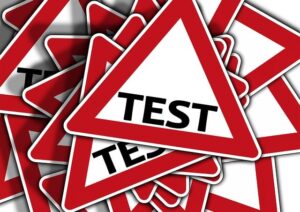In today's global education landscape, examination papers are crucial for assessing students worldwide. Accurate translation and certification ensure academic integrity, equal opportunities, and precise question-answer fidelity, especially in high-stakes exams. Advanced technologies combine machine translation with human expertise to overcome linguistic challenges, cultural nuances, and formatting inconsistencies. Professional services employ rigorous processes including native translators and expert proofreading to maintain document integrity. Certified papers facilitate international student mobility, assessment fairness, and interoperability among institutions, streamlining administrative processes and enhancing the global academic experience.
Looking to navigate the complexities of international education? Translating and certifying examination papers is crucial for ensuring fair access to learning globally. This comprehensive guide explores the growing importance of accurate and reliable translation in academia, delving into common challenges, efficient processes, quality assurance, and the diverse applications of translated exams. Discover how these steps facilitate equitable educational opportunities worldwide.
From understanding the significance of accuracy to exploring innovative solutions, this article empowers educators and students alike.
- Understanding the Importance of Examination Paper Translation and Certification
- Common Challenges in Translating Exam Papers
- Efficient Processes for Seamless Translation
- Ensuring Accuracy and Quality in Certified Translations
- Benefits and Applications of Translated and Certified Examination Papers
Understanding the Importance of Examination Paper Translation and Certification
In today’s globalized education landscape, students often find themselves navigating examinations that transcend geographical boundaries. This presents a unique challenge when it comes to examination papers, as they require careful handling and accurate translation for fair assessment. Understanding the importance of examination paper translation and certification is paramount to ensuring academic integrity and providing equal opportunities for all candidates, regardless of their native language.
Accurate translation ensures that questions and answers are conveyed precisely, preserving the intent and difficulty level originally intended by the examiners. Certification, on the other hand, verifies the authenticity and integrity of the translated documents, safeguarding against potential tampering or fraud. This meticulous process is crucial, especially for international students who seek to transfer their qualifications or for institutions facilitating remote examinations globally.
Common Challenges in Translating Exam Papers
Translating examination papers can be a complex task, presenting several challenges that go beyond simple language conversion. One of the primary hurdles is maintaining academic integrity and ensuring that the translated content accurately reflects the original intent and structure of the exam questions. This is especially critical for high-stakes examinations where even minor errors can have significant consequences.
Additionally, cultural nuances often pose another set of difficulties. Different languages have unique ways of expressing concepts, and finding equivalent terms can be tricky. For instance, understanding subtle differences in vocabulary or phrasing that convey precise ideas specific to a discipline becomes essential to avoid misinterpretations. The process also requires careful consideration of formatting inconsistencies, especially when dealing with graphs, charts, and other visual elements present in exam papers.
Efficient Processes for Seamless Translation
The process of translating and certifying examination papers has evolved significantly, becoming more efficient and seamless through advanced technologies. Modern tools allow for precise and contextually accurate translations, ensuring that the meaning and intent of the original content are preserved. This is particularly crucial when dealing with academic documents and official examinations, where accuracy and reliability are paramount.
Efficient processes involve leveraging machine translation algorithms coupled with human expertise. Automated systems can quickly handle large volumes of text, while professional translators refine and ensure the final output meets the highest standards. This two-pronged approach guarantees not only speed but also precision in translating examination papers, catering to diverse linguistic requirements globally.
Ensuring Accuracy and Quality in Certified Translations
When it comes to certifying examination papers, ensuring accuracy and quality is paramount. Professional translation services employ rigorous processes to guarantee that every word translated is not just grammatically correct but also contextually precise. This involves employing native-speaking translators with specialized knowledge in educational or academic fields, who understand the nuances of terminology specific to Examination Papers.
Advanced quality control measures, including proofreading by expert linguists, are implemented to catch any potential errors. This multi-step approach ensures that certified translations maintain the integrity and value of the original examination papers, providing reliable documentation for academic purposes worldwide.
Benefits and Applications of Translated and Certified Examination Papers
Translated and certified examination papers offer a multitude of benefits, especially in our globalized educational landscape. One of the key advantages is accessibility; they enable students from diverse linguistic backgrounds to participate equally in international assessments, bridging communication barriers. This inclusivity ensures fair competition, promoting diversity and equity in education.
Additionally, these papers enhance interoperability between educational institutions worldwide. Certified translations facilitate the recognition and acceptance of qualifications across borders, simplifying the process for students aiming to study or work abroad. This application streamlines administrative procedures, saving time and resources for both students and educational bodies alike, ultimately enriching the global academic experience.
Translating and certifying examination papers is a vital process that ensures accessibility and accuracy for diverse learning environments. By overcoming common challenges through efficient processes, we can guarantee high-quality results. This not only enhances educational opportunities but also fosters inclusivity in global assessments. The benefits are clear: improved student experiences, fairer evaluations, and increased trust in academic institutions. Embracing these practices enables us to navigate the complexities of international education with confidence, ultimately elevating the standards of examination papers worldwide.
